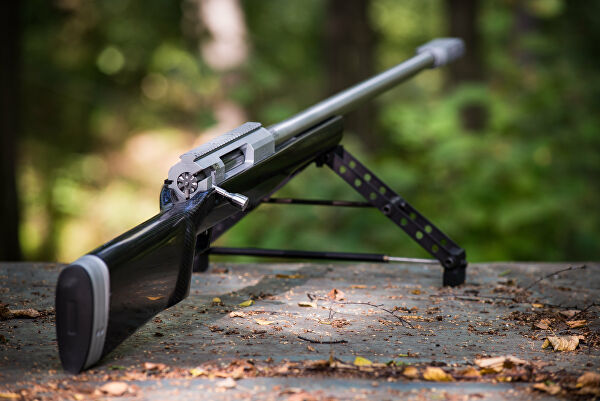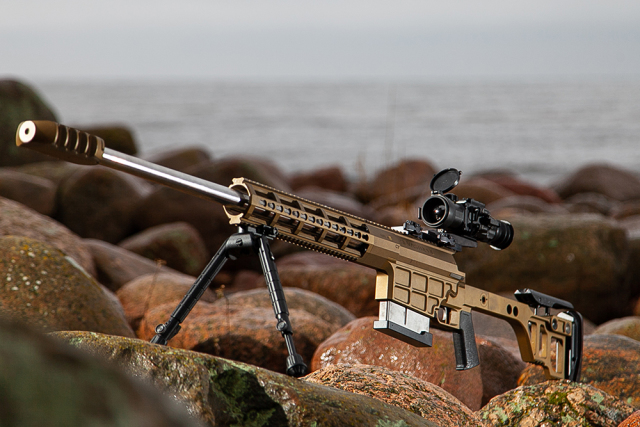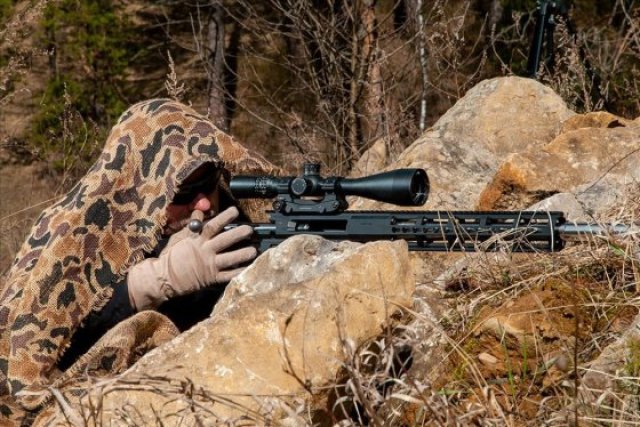RG managed to talk with Vladislav Lobaev, a leading Russian expert in the field of sniper weapons, the creator of ultra-long-range rifles. He told how his rifles showed themselves in their own, whether a sniper can destroy a missile system and why high-precision rifles are so slowly being adopted.
Many people's ideas about snipers are still based on examples from the Great Patriotic War. How much has the role of a sniper changed since that time? What place does it occupy in modern warfare?
Vladislav Lobaev: The role of the sniper has grown significantly since then. During the Great Patriotic War, snipers were single, at most they worked in pairs. Now there is a tendency to increase them in the group. There were threes, fours, as well as full-fledged sniper units - platoons and companies, again, divided into twos and threes. In addition, other tasks have arisen. The so-called antimaterial sniping on various military equipment, "hard" targets. The percentage of participation in counter-sniper missions has increased. This is still a change compared to the Second World War. Then snipers worked only on priority targets: gun crews, grenade launchers, machine gunners, commanders, signalmen. Now there is more countersniper load.
Can we say that our snipers have found themselves in fundamentally new combat conditions and are solving tasks that they did not have to solve before? How do their tactics change during their own, what does their special operation teach them?
Vladislav Lobaev: Everyone found themselves in fundamentally new combat conditions, including snipers. I wrote in my channel about what this conflict would be like, as I saw it, even before the start of the special operation, and about the role of sniper units in it. And everything came true almost one hundred percent. In particular, about the shooting ranges, which I talked about for several years before my own, to which my opponents objected that there could be no one and a half, much less two kilometers in modern combat. Of course, it was possible to prepare for this in advance, but as it is, so it is. The main thing is that conclusions are being drawn. The changes are now visible, and our weapons are helping to solve these problems.
Tactics change according to the weapons used. Our new rifles with very serious characteristics in aiming range and accuracy are falling, and tactics are changing. If the SVD and "Cord" with a range of 800 and 1200 meters were in service, then the tactics were based on these capabilities. When weapons capable of hitting a tall figure, say, two kilometers, get into your unit, of course, you can take on previously unthinkable tasks. And to make the enemy feel uncomfortable at this distance. Or hit small-sized targets protected in shelters, concrete structures.
At the first stage, you announced fundraising for rifles of your production for snipers participating in the SVO. How many and what, if not a secret, rifles were able to be delivered to the front?
Vladislav Lobaev: Fees are only one of the delivery channels. A lot of rifles are paid for by the units themselves, as well as sponsors. For example, one paid for the equipment of a sniper platoon, the other for a company. I cannot say exactly how many rifles went to the front. And as for the names, the whole line. Our model range is the largest in the world, and we did not expect that each model and modification would find its niche.
We receive feedback from a significant part of the units about our weapons. We know all the nuances of the application. In modern practice, a sniper is not credited with hitting a target if there is no video recording. Naturally, we watch the videos and analyze them. They cannot be shown to the general public, but each shot, as a rule, if it is carried out by a unit of the Armed Forces of the Russian Federation, is documented. Therefore, statistics are collected, and we can make recommendations based on it.
How has your legendary ultra-long rifle "Twilight" proved itself in the SVO?
Vladislav Lobaev: She has proven herself very well. It is successfully applied. Although there is a more suitable model "Sevastopol" DXL-4M in calibers.375 and .408 CheyTac, but it so happened that the beginning of its coincided with the stage of its modernization. Right now, the first installation batch of the new evolution of Sevastopol is being manufactured. And since the demand for the CheyTac caliber in the troops is high, we had to supply the Twilight rifle. After all, there are a lot of long-range tasks. And despite its ungainly butt, a more sporty design, there was a use for it. This is shooting from stationary positions. The performance of very long-range tasks compensated for the complexity of its transportation in military equipment. It is not very compact.
 |
| Ultra-long-range sniper rifle Lobaev SVLK14S "Twilight". |
| Source: © RIA Novosti / Andrey Stanavov |
And now a batch of DXL-4 "Sevastopol" is just coming out, and I think that it will mainly be supplied to the troops. And "Twilight", of course, has taken its place, but it is difficult for me to predict its future. Maybe the new Sevastopol will displace him completely, or maybe he will remain to perform some special sniper missions.
 |
| DXL-4 "Sevastopol". |
| Source: Lobaev Arms / lobaevarms.ru |
Can we talk about the difference between the NATO sniper school and the Soviet/Russian one? How does it manifest itself?
Vladislav Lobaev: You can talk about differences. The school in NATO is quite diverse. The British one has its nuances, the American one is fundamental, and all the others are its offshoots. The Soviet-Russian school is characterized by the fact that it is based on the old sniper weapons - SVD, VSS and "Cord". And all these weapons in the modern sense are not sniper weapons with all the ensuing problems of accuracy and range. Because of this, there are a number of differences in the training methodology. NATO uses CheyTac caliber weapons with a range of up to two kilometers and, accordingly, they have different tactics and training methods. In our school, the Mannlicher with a range of 1200 meters was the most long-range, respectively, the cadets did not receive shooting skills from longer-range weapons. Now this situation is slowly changing, as our rifles are getting into the troops.
The problem of suppressing Ukrainian air defense systems remains. You wrote that the special forces and, in particular, snipers have always been engaged in the hunt for the SAM. For example, in Iraq during Operation Desert Storm. How does this happen in practice? Where are they hitting, ammunition or radar antennas? Is it possible for our snipers in their own?
Vladislav Lobaev: For each type of equipment that is being hunted, there are clear instructions with a description of vulnerabilities. This is something like the schemes available in every training class of a military unit with enemy tanks, armored vehicles, planes. Here is the same for rifles of different calibers. Ammunition and antennas can be vulnerable. Some targets are quite "soft", like our S-300, S-400 complexes - they are not armored. HIMARS and some other modern Western MLRS complexes are already lightly armored and they cannot always be penetrated even with a 12.7 mm caliber, so this creates certain difficulties. But in Ukraine, the main complexes are still domestic. Can our snipers achieve these goals? The problem is that deep operations are very difficult due to the operational situation on enemy territory, and the survival of such groups is questionable.
They say a few snipers can shackle an entire unit. Is it possible, if this is correct, to compare the effectiveness of three or four snipers and, for example, the calculation of MLRS or ACS?
Vladislav Lobaev: Yes, snipers can have a serious demoralizing effect and stop the enemy's offensive. This was shown by Vasily Zaitsev in Stalingrad, when a sniper platoon stopped the regiment's offensive with high-precision fire, killing machine gunners, commanders, and gun crews.
As for comparing the effectiveness of three or four snipers and heavy weapons, there are completely different ranges. The MLRS has tens of kilometers. But all the same, sooner or later you will have to get closer to the enemy, and then sniper weapons come to the fore.
You have repeatedly raised the issue of insufficient equipment of the forces participating in the SVO with modern sniper weapons. What is the reason? It would seem that several interesting developments have appeared in recent years.
Vladislav Lobaev: I have mentioned the reason more than once - it is the complexity of putting new products into service and purchasing them. There is a fairly simple solution - to allow interested units to purchase weapons of interest to them without putting them into service. Let them buy, test, operate expertly and decide in what quantities they need these rifles. And the armament should be left only for the army, and even then simplify the procedure. Now it is very long, it is almost impossible to deliver new items.
Oleg Koryakin

